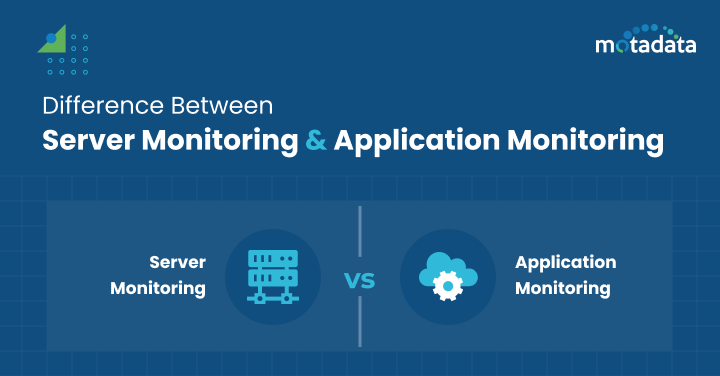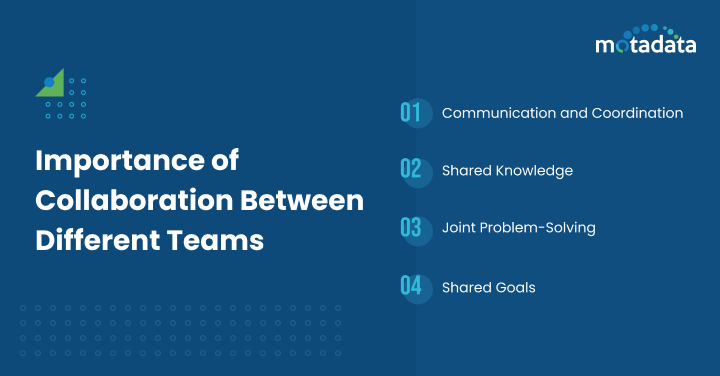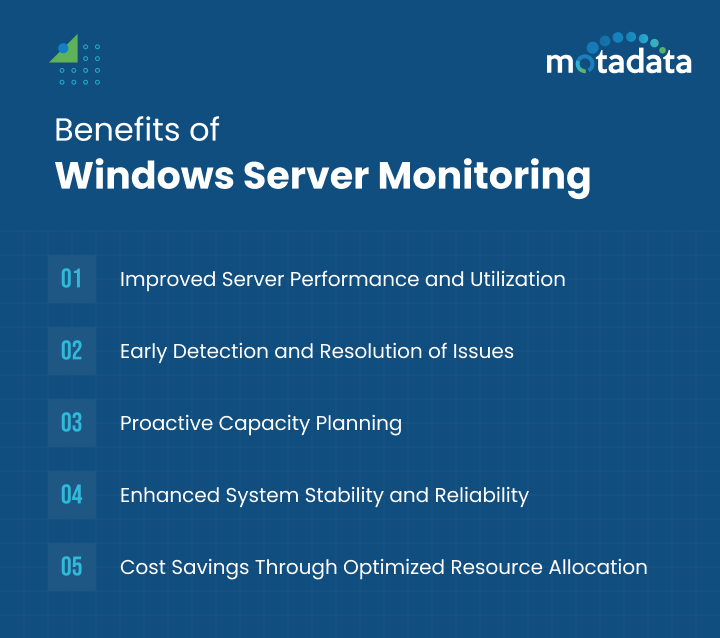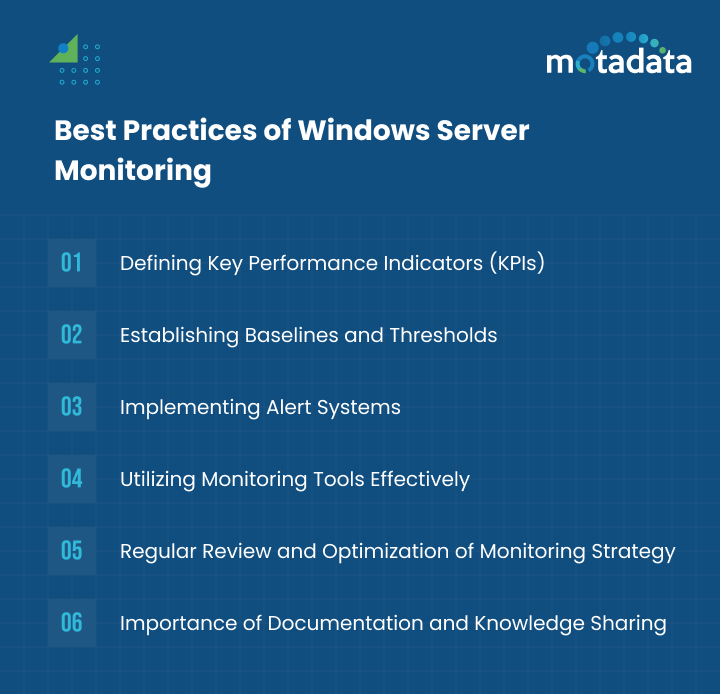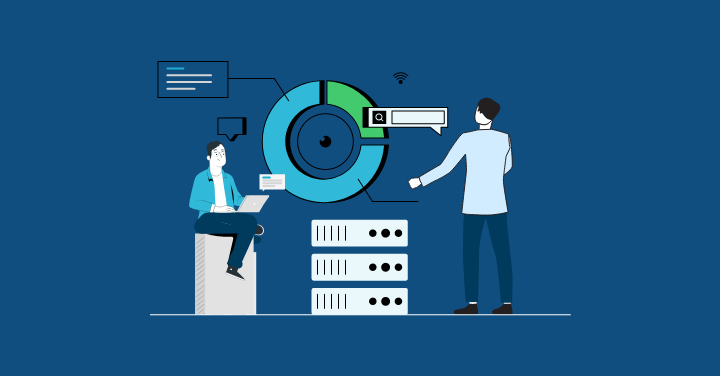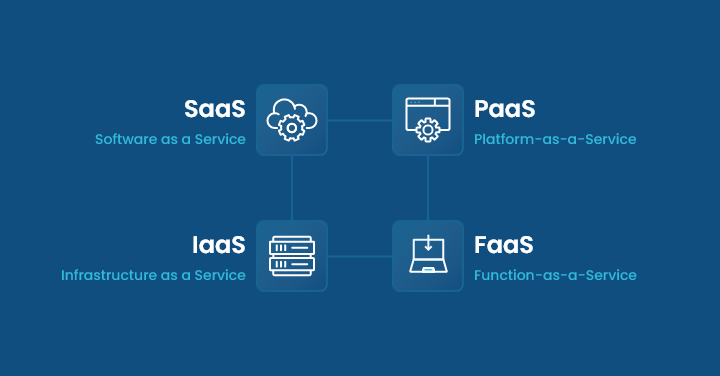Windows Servers are cornerstones of modern IT infrastructures, powering a diverse range of applications and services.
Its reliability and performance directly impact business operations, making monitoring crucial and enhancing the overall user experience.
Server performance monitoring involves continuously tracking the health and performance of servers and optimal log management to ensure optimal operation and prevent downtime.
This proactive approach allows organizations to identify and address issues promptly by monitoring software, optimizing resource utilization, ensuring high service availability, improving security, and complying with regulations.
Windows server monitoring focuses explicitly on tracking the performance and health of Windows-based servers.
This includes monitoring key metrics such as:
- CPU utilization
- Memory usage
- Disk I/O
- Network traffic
- Service status
- Application performance
Organizations can gain valuable insights into their Windows server environment by effectively monitoring metrics, web server and enabling them to make data-driven decisions and optimize their IT operations.
What is Windows Server Monitoring?
Windows Server Monitoring continuously tracks Windows-based VPS and dedicated servers performance, health, and resource utilization. It involves collecting and analyzing data from various aspects of the server’s operation to ensure optimal performance, detect potential issues, and maintain high service availability.
Scope of Windows Server Monitoring:
- Hardware Monitoring: Tracking CPU usage, memory consumption, disk I/O, and network traffic to identify bottlenecks and optimize resource allocation. One strategy to manage CPU performance and heat generation is CPU undervolting, which can reduce power consumption and prevent thermal throttling, especially in high-load environments.
- Software Monitoring: Monitoring the performance of applications, services, and processes running on the server, ensuring they are functioning as expected.
- Security Monitoring: Detecting security threats, vulnerabilities, and unauthorized access attempts to protect the server and its data.
- Performance Monitoring: Tracking key performance indicators (KPIs) to assess overall system health and identify areas for improvement.
- Event Log Monitoring: Analyzing system and application event logs to detect errors, warnings, and informational messages.
Essential Components and Elements:
- Monitoring Tools: Utilizing software tools to collect, analyze, and visualize server data.
- Sensors and Agents: Deploying agents on the server to gather data and report it to the monitoring tool.
- Dashboards: Creating visual representations of key metrics to facilitate analysis and decision-making.
- Alerts and Notifications: Configuring alerts to notify administrators of critical issues or anomalies.
- Historical Data: Storing and analyzing historical data to identify trends, patterns, and root causes of problems.
Differentiating Between Server Monitoring and Application Monitoring:
While both server and application monitoring are essential, they focus on different aspects:
- Server Monitoring: Tracks the overall health, performance, and memory utilization of the server hardware and operating system.
- Application Monitoring focuses on the performance and behavior of individual applications running on the server.
While there is some overlap between the two, server monitoring provides a broader view of the server’s health through Windows monitoring, while application monitoring drills down into the specific performance of individual applications and examines the overall server health.
Who Monitors Windows Servers?
Roles Responsible for Server Monitoring
Several roles within an organization are typically involved in server monitoring:
- System Administrators: Primarily responsible for the day-to-day management of servers, even the virtual machines, including monitoring performance, troubleshooting issues, and applying security patches.
- Network Engineers: Monitor network performance and connectivity to ensure servers can communicate effectively.
- DevOps Engineers: Collaborate with development and operations teams to monitor the performance of applications running on servers and ensure smooth deployment and updates.
- Security Analysts: Monitor for security threats and vulnerabilities, protecting servers from unauthorized access and attacks.
Read Also: A Complete Guide to Server Monitoring
Division of Responsibilities Based on Organizational Structure
The division of responsibilities for server monitoring often depends on the organization’s size and structure. Common approaches include:
- Centralized IT Department: A dedicated IT team handles all server monitoring and management tasks.
- Decentralized IT Teams: Smaller teams or individuals are responsible for specific servers or applications within the organization.
- Shared Responsibility: A combination of centralized and decentralized approaches, where certain tasks are handled by central IT, while others are delegated to individual teams.
Importance of Collaboration Between Different Teams
Effective server monitoring requires collaboration between various teams to ensure a comprehensive and coordinated approach. This includes:
- Communication and Coordination: Clear team communication to avoid conflicts and ensure consistent monitoring practices.
- Shared Knowledge: Sharing information and best practices to improve overall monitoring effectiveness.
- Joint Problem-Solving: Collaborating to identify and resolve issues that affect multiple systems or teams.
- Shared Goals: Aligning monitoring goals and objectives across different teams to ensure a unified approach.
Fostering collaboration and communication between these teams can help organizations achieve more effective server monitoring, improve efficiency, and minimize downtime.
Importance of Effective Windows Server Monitoring
Business Impact of Server Downtime and Performance Issues
Server downtime and performance issues can have a significant negative impact on a business, leading to:
- Lost revenue: Downtime can directly affect productivity and customer satisfaction, resulting in lost sales and revenue.
- Damage to reputation: Frequent outages or performance issues can damage a company’s reputation and erode customer trust.
- Reduced efficiency: Downtime and performance issues can disrupt workflows, reduce employee productivity, and hinder business operations.
- Increased costs: Addressing server issues can be expensive, involving IT staff time, potential data recovery costs, and lost productivity.
Role of Monitoring in Maintaining Service Levels
Effective server monitoring is crucial for maintaining high service levels and ensuring business continuity.
By proactively identifying and addressing issues, organizations can:
- Minimize downtime: Prevent outages by detecting and resolving problems before they escalate.
- Optimize performance: Identify performance bottlenecks and take corrective actions to improve response times and system efficiency.
- Ensure compliance: Monitor for compliance with industry standards and regulations, reducing the risk of fines and penalties.
- Improve customer satisfaction: Provide reliable and responsive services, increasing customer satisfaction and loyalty.
Preventing Data Loss and Security Breaches
Server monitoring plays a vital role in preventing data loss and security breaches by:
- Detecting anomalies: Identifying unusual activity or deviations from normal behavior that may indicate security threats.
- Preventing unauthorized access: Monitoring for unauthorized attempts to access or modify server data.
- Implementing security measures: Identifying vulnerabilities and implementing appropriate security patches and configurations.
- Backing up data: Regularly backing up server data to ensure recovery in case of data loss or corruption.
Effective server monitoring is essential for maintaining a healthy and secure IT infrastructure. Organizations can minimize downtime, optimize performance, protect data, and ensure business continuity by proactively identifying and addressing issues.
Benefits of Windows Server Monitoring
Windows server monitoring offers numerous benefits for organizations, including:
1. Improved Server Performance and Utilization:
- Identify bottlenecks: Pinpoint resource-intensive processes or applications that are causing performance issues.
- Optimize resource allocation: Allocate resources more efficiently to improve overall performance and reduce costs.
- Prevent performance degradation: Proactively address issues before they impact system performance.
2. Early Detection and Resolution of Issues:
- Proactive troubleshooting: Detect and resolve problems before they escalate, minimizing downtime and disruptions.
- Reduced MTTR: Minimize mean time to repair (MTTR) by quickly identifying and resolving issues.
- Preventative maintenance: Identify potential issues and take proactive steps to prevent them from occurring.
3. Proactive Capacity Planning:
- Forecast resource needs: Anticipate future requirements based on historical data and trends.
- Avoid overprovisioning: Optimize resource allocation to avoid unnecessary costs.
- Ensure scalability: The server infrastructure can handle future growth and workloads.
4. Enhanced System Stability and Reliability:
- Minimize downtime: Proactively address issues to prevent outages and maintain system stability.
- Improve reliability: Ensure consistent performance and availability of critical services.
- Reduce risk: Mitigate the risk of data loss, security breaches, and other adverse events.
5. Cost Savings Through Optimized Resource Allocation:
- Identify underutilized resources: Identify resources not being fully utilized and reallocate them as needed.
- Reduce energy consumption: Optimize resource usage to reduce energy consumption and costs.
- Avoid unnecessary hardware purchases: Make informed decisions based on monitoring data.
By leveraging the benefits of Windows server monitoring, organizations can improve system performance, reduce costs, enhance reliability, and ensure business continuity.
Challenges of Windows Server Monitoring
Windows server monitoring can be complex due to several factors:
1. Complexity of Modern Server Environments:
- Virtualization and Cloud: The increasing adoption of virtualization and cloud technologies has made server environments more dynamic and complex to monitor.
- Heterogeneous Environments: Managing a mix of physical, virtual, and cloud servers can present challenges in terms of consistency and standardization.
- Containerization: The use of containers introduces additional layers of complexity to monitor.
2. Managing a Large Number of Servers:
- Scalability: Monitoring a large number of servers can be resource-intensive and challenging to manage efficiently.
- Data Overload: The sheer volume of data generated by numerous servers can make it difficult to analyze and identify trends.
3. Balancing Monitoring Overhead with Performance Impact:
- Resource Consumption: Monitoring tools can consume system resources, potentially impacting the performance of the servers being monitored.
- Minimizing Overhead: Striking a balance between effective monitoring and minimizing the performance impact of monitoring tools.
4. Skillset Requirements for Effective Monitoring:
- Specialized Knowledge: Monitoring requires a deep understanding of Windows server technologies, networking, and performance metrics.
- Technical Expertise: Monitoring professionals need strong technical skills to configure, manage, and troubleshoot monitoring tools.
5. Choosing the Right Monitoring Tools:
- Diverse Tool Landscape: The market is flooded with various monitoring tools, each with its own strengths and weaknesses.
- Evaluation and Selection: Choosing the right tool involves careful evaluation based on features, scalability, ease of use, and cost.
Read Also: What are the factors to consider when Choosing a Network Monitoring Tool?
Motadata AIOps addresses these challenges by offering:
- Unified Monitoring Platform: A comprehensive platform that can handle diverse server environments, from physical to virtual and cloud.
- Scalability: Designed to handle large-scale deployments and monitor thousands of servers efficiently.
- Performance Optimization: Minimizes the monitoring overhead to ensure minimal impact on server performance.
- User-Friendly Interface: Provides an intuitive interface that simplifies monitoring tasks, even for users with limited technical expertise.
- Comprehensive Feature Set: Offers many features, including performance monitoring, alert management, capacity planning, and security analysis.
- Integration Capabilities: Integrates with other tools in your IT infrastructure for a unified view of your environment.
By leveraging Motadata AIOps, organizations can effectively manage the complexities of Windows server monitoring, ensuring optimal performance, security, and compliance.
Best Practices of Windows Server Monitoring
Effective Windows server monitoring requires a well-defined strategy and the implementation of best practices. Here are some key areas to focus on:
1. Defining Key Performance Indicators (KPIs):
- Identify critical metrics: Determine the most important metrics to monitor for your specific environment, such as CPU utilization, memory usage, disk I/O, network traffic, and application performance.
- Set clear objectives: Define your monitoring goals, such as improving performance, reducing costs, or ensuring compliance.
2. Establishing Baselines and Thresholds:
- Establish baselines: Determine normal performance levels for key metrics to identify deviations and anomalies.
- Set thresholds: Define thresholds for critical metrics to trigger alerts when values exceed or fall below acceptable limits.
3. Implementing Alert Systems:
- Configure alerts: Set up alerts for critical events, such as server downtime, high CPU utilization, or security breaches.
- Choose appropriate channels: Based on the severity of the alert, select communication channels (email, SMS, notifications).
- Respond promptly: Ensure that alerts are addressed promptly to minimize downtime and impact.
4. Utilizing Monitoring Tools Effectively:
- Choose the right tools: Select monitoring tools suitable for your specific needs and environment.
- Configure properly: Configure tools to collect the necessary data and generate meaningful reports.
- Regularly review and update: Periodically review and update monitoring configurations to ensure they remain relevant and effective.
5. Regular Review and Optimization of Monitoring Strategy:
- Evaluate effectiveness: Regularly assess your monitoring strategy’s effectiveness and identify areas for improvement.
- Adjust as needed: Modify monitoring configurations and thresholds based on changing requirements and identified issues.
- Stay updated: Keep up with the latest monitoring best practices and technologies.
6. Importance of Documentation and Knowledge Sharing:
- Document processes: Document your monitoring procedures and best practices for future reference and knowledge sharing.
- Train staff: Provide training to ensure staff members are familiar with monitoring tools and processes.
- Foster collaboration: Encourage collaboration between IT teams to share knowledge and best practices.
By following these best practices, organizations can establish effective Windows server monitoring strategies that improve performance, reduce downtime, and ensure their IT infrastructure’s overall health and reliability.
Windows Server Monitoring Tools and Technologies
The market offers a wide range of Windows server monitoring tools, each with strengths and weaknesses. Some popular options include:
- Built-in tools: Windows Performance Monitor, Task Manager, Event Viewer
- Open-source tools: Nagios, Zabbix, Prometheus
- Commercial tools: SolarWinds Server & Application Monitor, Datadog, New Relic
Comparison of Different Tool Types
- Agent-based tools: Require agents to be installed on monitored servers, providing more granular data but potentially impacting performance.
- Agent-less tools: Rely on network protocols (SNMP, WMI) to collect data, offering lower overhead but potentially limited visibility.
Integration with Existing IT Management Systems
- Compatibility: Look for tools that integrate seamlessly with your existing IT infrastructure, such as Active Directory, ServiceNow, and ITSM solutions.
- Data consolidation: Ensure the tool can consolidate data from multiple sources for a unified view.
Cost-Benefit Analysis
- Cost: Consider the initial cost of the tool, ongoing maintenance fees, and potential licensing costs.
- Features: Evaluate the features offered by the tool to ensure it meets your specific monitoring needs.
- Scalability: Consider the tool’s ability to scale as your infrastructure grows.
- Ease of use: Choose a tool with a user-friendly interface that is easy to learn and use.
Motadata AIOps: The Superior Choice
Motadata AIOps stands out as a superior choice for Windows server monitoring due to its:
- Comprehensive monitoring: This service offers a unified platform for monitoring various infrastructure components, including servers, networks, applications, and virtual environments.
- Agent-based and agent-less monitoring: Provides flexibility to choose the most suitable monitoring method based on your requirements.
- Seamless integration: Integrates with various IT management systems, providing a centralized view of your infrastructure.
- Advanced analytics: Offers powerful analytics capabilities to gain deeper insights into server performance and identify trends.
- Scalability: Handles large-scale deployments and can monitor thousands of servers efficiently.
- Cost-effective: Provides a cost-effective solution with a flexible pricing model.
By choosing Motadata AIOps, organizations can benefit from a comprehensive and efficient Windows server monitoring solution that meets their needs and delivers valuable insights into their IT infrastructure.
Case Studies and Real-World Examples
Successful Implementation of Windows Server Monitoring
- Jubilant Foodworks: They implemented Motadata AIOps to monitor their critical Windows servers. The company significantly reduced downtime and improved overall system performance by proactively identifying and addressing issues.
- Kotak Securities: Kotak Securities used Motadata AIOps to monitor their Windows-based medical imaging systems. The tool helped ensure high availability of critical services and prevented data loss.
Overcoming Challenges and Lessons Learned
- Jubiliant Foodworks : Jubiliant faced challenges integrating its existing monitoring tools with Motadata AIOps. It overcame this by leveraging Motadata’s API and custom integrations.
- Kotak Securities: Kotak Securities encountered difficulties monitoring virtualized Windows servers. They addressed this by configuring Motadata AIOps to monitor virtual environments effectively.
ROI and Benefits Achieved
- Jubiliant Foodworks: Jubiliant realized a significant ROI by reducing downtime, improving system performance, and optimizing resource utilization.
- Kotak Securities: Using best EMR for solo practice in Healthcare improved patient satisfaction and reduced operational costs by ensuring the high availability of their medical imaging systems.
These case studies demonstrate the real-world benefits of Windows server monitoring using Motadata AIOps. Organizations can improve system performance, reduce downtime, enhance security, and achieve significant ROI by implementing effective monitoring strategies.
Conclusion
Recap of the Importance of Windows Server Monitoring
Windows server monitoring is essential for ensuring your IT infrastructure’s optimal performance, reliability, and security.
By effectively monitoring your Windows servers, you can:
- Proactively identify and address issues: Prevent downtime and disruptions.
- Optimize resource utilization: Improve performance and reduce costs.
- Maintain high service availability: Ensure consistent uptime and reliability.
- Protect against security threats: Detect and mitigate security risks.
- Comply with industry regulations: Ensure compliance with relevant standards.
Best Practices for Successful Implementation
To achieve effective Windows server monitoring, follow these best practices:
- Define key performance indicators (KPIs).
- Establish baselines and thresholds.
- Implement robust alert systems.
- Choose the right monitoring tools.
- Regularly review and optimize your monitoring strategy.
- Document processes and share knowledge.
Future Trends and Developments
The field of server monitoring is constantly evolving. Keep an eye on emerging trends such as:
- Artificial intelligence (AI) and machine learning: Leveraging AI and ML for anomaly detection and predictive analytics.
- Cloud-based monitoring: Utilizing cloud-based monitoring solutions for scalability and flexibility.
- Automation and orchestration: Automating routine monitoring tasks and integrating with other IT management tools.
Continuous Improvement
Server monitoring is an ongoing process that requires continuous evaluation and improvement. Regularly review your monitoring strategy, explore new tools and techniques, and adapt to changing requirements to ensure your Windows servers’ optimal performance and security. By following these guidelines and staying updated on the latest trends, you can effectively monitor your Windows servers and achieve your business objectives.
FAQs:
Windows Server Monitoring continuously tracks Windows-based servers’ performance, health, and resource utilization.
It involves collecting and analyzing data from various aspects of the server’s operation to ensure optimal performance, detect potential issues, and maintain high service availability.
This involves monitoring key performance indicators (KPIs) such as:
- CPU utilization
- Memory usage
- Disk I/O
- Network traffic
- Service status
- Application performance
By effectively monitoring these metrics, organizations can proactively identify and address issues, optimize resource allocation, and ensure the reliability and performance of their Windows servers.
Key Considerations:
- Features: Look for tools that offer comprehensive monitoring capabilities, including CPU usage, memory consumption, disk I/O, network traffic, service status, and application performance.
- Scalability: Ensure the tool can handle your current and future monitoring needs, especially if you have many servers.
- Integration: Check if the tool integrates with your IT infrastructure and other monitoring tools.
- Ease of use: A user-friendly interface simplifies monitoring tasks and reduces training time.
- Cost: Consider the initial cost, ongoing maintenance fees, and licensing costs.
- Support and documentation: Look for tools with good support resources and documentation.
Motadata AIOps: A Superior Choice
Motadata AIOps stands out as an excellent choice for Windows server monitoring due to its:
- Comprehensive monitoring: This service offers a unified platform for monitoring various infrastructure components, including servers, networks, applications, and virtual environments.
- Scalability: Handles large-scale deployments and can monitor thousands of servers efficiently.
- Ease of use: Provides a user-friendly interface that is easy to learn and use.
- Integration capabilities: Integrates with various IT management systems, providing a centralized view of your infrastructure.
- Advanced analytics: Offers powerful analytics capabilities to gain deeper insights into server performance and identify trends.
- Cost-effective: Provides a cost-effective solution with a flexible pricing model.
By choosing Motadata AIOps, organizations can benefit from a comprehensive and efficient Windows server monitoring solution that meets their needs and delivers valuable insights into their IT infrastructure.
The ideal frequency for monitoring Windows servers depends on several factors, including:
- Criticality of the server: Servers hosting critical applications or data should be monitored more frequently than those with less critical workloads.
- Historical data: Analyze data to identify patterns and determine appropriate monitoring intervals.
- Resource constraints: Consider the overhead of monitoring server resources and adjust frequency accordingly.
- Business requirements: Align monitoring frequency with your organization’s specific needs and service level agreements (SLAs).
General Recommendations:
- Critical servers: Monitor every 5-15 minutes.
- Less critical servers: Monitor every 30 minutes to 1 hour.
- Background tasks: Monitor less frequently, as needed.
It’s essential to continuously evaluate and adjust your monitoring frequency to ensure optimal performance and resource utilization.
Windows server monitoring plays a crucial role in optimizing system performance by:
- Identifying bottlenecks: Monitoring tools can pinpoint resource-intensive processes or applications causing performance issues.
- Optimizing resource allocation: Based on monitoring data, you can allocate resources more efficiently, preventing bottlenecks and improving overall performance.
- Proactive troubleshooting: Early detection of issues allows you to address them before they escalate, minimizing downtime and performance impact.
- Capacity planning: Monitoring helps you anticipate future resource needs and avoid overprovisioning, ensuring optimal resource utilization.
- Fine-tuning configurations: By analyzing monitoring data, you can adjust system configurations to improve performance and efficiency.
In summary, Windows server monitoring empowers you to make data-driven decisions that enhance system performance, reduce downtime, and optimize resource utilization.



